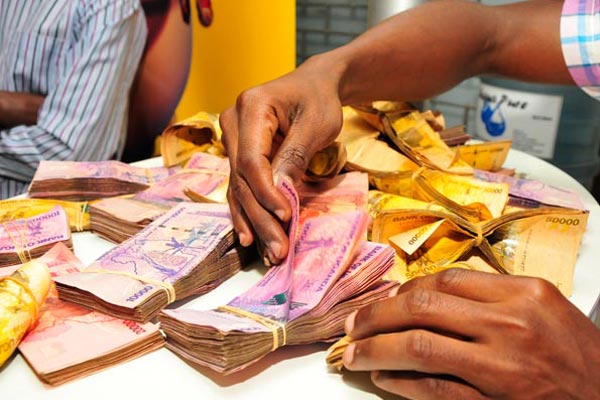The Uganda Shilling remained largely stable over the quarter ended May 2019 despite some volatility recorded in April 2019.
However, according to the State of the Economy Report released by Bank of Uganda (BoU) in July 2019, outlook indicates that the local unit is likely to get weaker.
On quarterly basis, the Shilling weakened by 1.1 percent against the US Dollar, to an average midrate of Shs3,736.3/US$ in the three months to May 2019, compared to the strengthening by 2 percent observed in the quarter ended January 2019.
On monthly basis, the report says, the Shilling depreciated by 0.8 percent in May 2019 driven largely by strong net dollar demand from offshore investors, manufacturing and oil firms.
It adds that banks maintained long dollar positions, which supported demand in the Interbank Foreign Exchange Market (IFEM), and stemmed stronger depreciation of the currency.
On trade weighted basis (Nominal Effective Exchange Rate – NEER), the exchange rate appreciated by 3.2 percent in the quarter ended May 2019, adding to the appreciation of 1.8 percent posted in the preceding quarter ended February 2019. On monthly basis the NEER depreciated by 0.3 percent in May 2019.
“Taking inflation into account (Real effective Exchange Rate – REER), the exchange rate depreciated by 0.4 percent on quarterly basis in the quarter ended April 2019 and by 0.7 percent on monthly basis in April 2019. Developments in the REER continue to be driven by the large inflation differential occasioned by low domestic inflation. These developments in the exchange rate are depicted,” the report says.
On the outlook for the Uganda Shilling, the report says: “The outlook is for a relatively stable exchange rate in the short-term supported by subdued dollar demand due to mid-month VAT and end-year corporate tax obligations and outstanding dividend payments. However in the short to medium term, the exchange rate is likely to depreciate faster on account of strong domestic demand and uncertainty in the global financial markets.”
Regional exchange rates
According to the report, developments in regional exchange rates were mixed during the three months to May 2019, with the Kenya Shilling appreciating, the Tanzania Shilling remaining largely stable and the Rwanda and Burundi Francs depreciating slightly against the US dollar.
The Kenya Shilling appreciated by 0.5 percent to average KES 100.86/US$, the Tanzania Shilling depreciated by 0.3 percent to average TZS 2,300.4/US$, while the Rwanda and Burundi Francs both depreciated by 1.1 percent to average RWF 890.3/US$ and average BIF 1,831.2/US$ in the quarter ended May 2019 compared to the previous quarter ended February 2019.
The report adds that conditions in the Interbank Foreign Exchange Market enabled BoU to boost foreign exchange reserves.
“Indeed, in the three months to May 2019, the BoU purchased US$ 82.2 million for reserve build-up and sold US$34.4 million to UETCL in targeted sales, as a result the net foreign currency purchased in the IFEM for reserve build-up was US$ 47.7 million. For FY2018/19, BoU has purchased US$ 725.06 million on net basis as at June 20, 2019, and has more than met the target of US$ 716 million for reserve build-up,” it adds.






